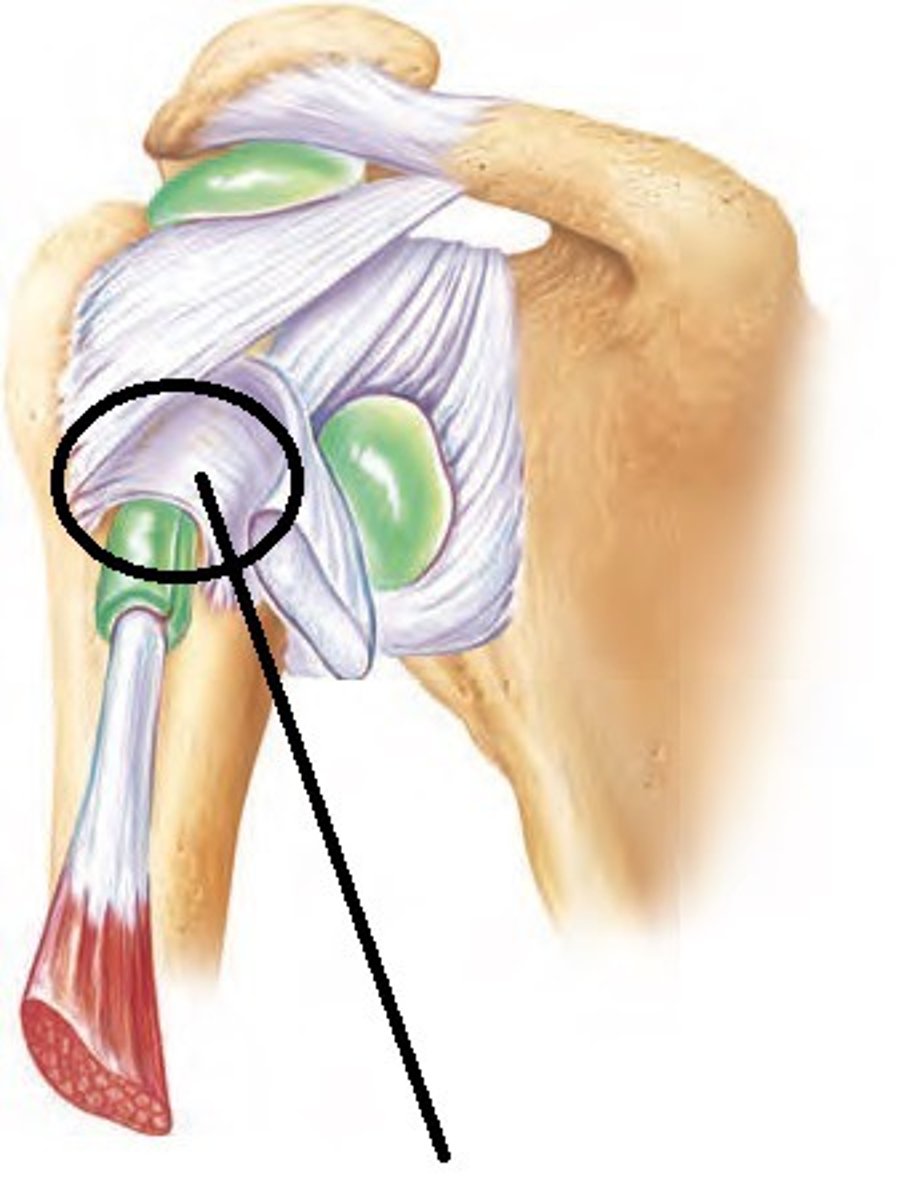joints and ligaments of the shoulder girddle and joint (chapter 3)
1/21
There's no tags or description
Looks like no tags are added yet.
Name | Mastery | Learn | Test | Matching | Spaced |
|---|
No study sessions yet.
22 Terms
coracoclavicular joint
sometimes considered a component of the acromioclavicular joint and sometimes treated as a separate joint. The joint is the articulation between the lateral (acromial) end of the clavicle and the coracoid process of the scapula.
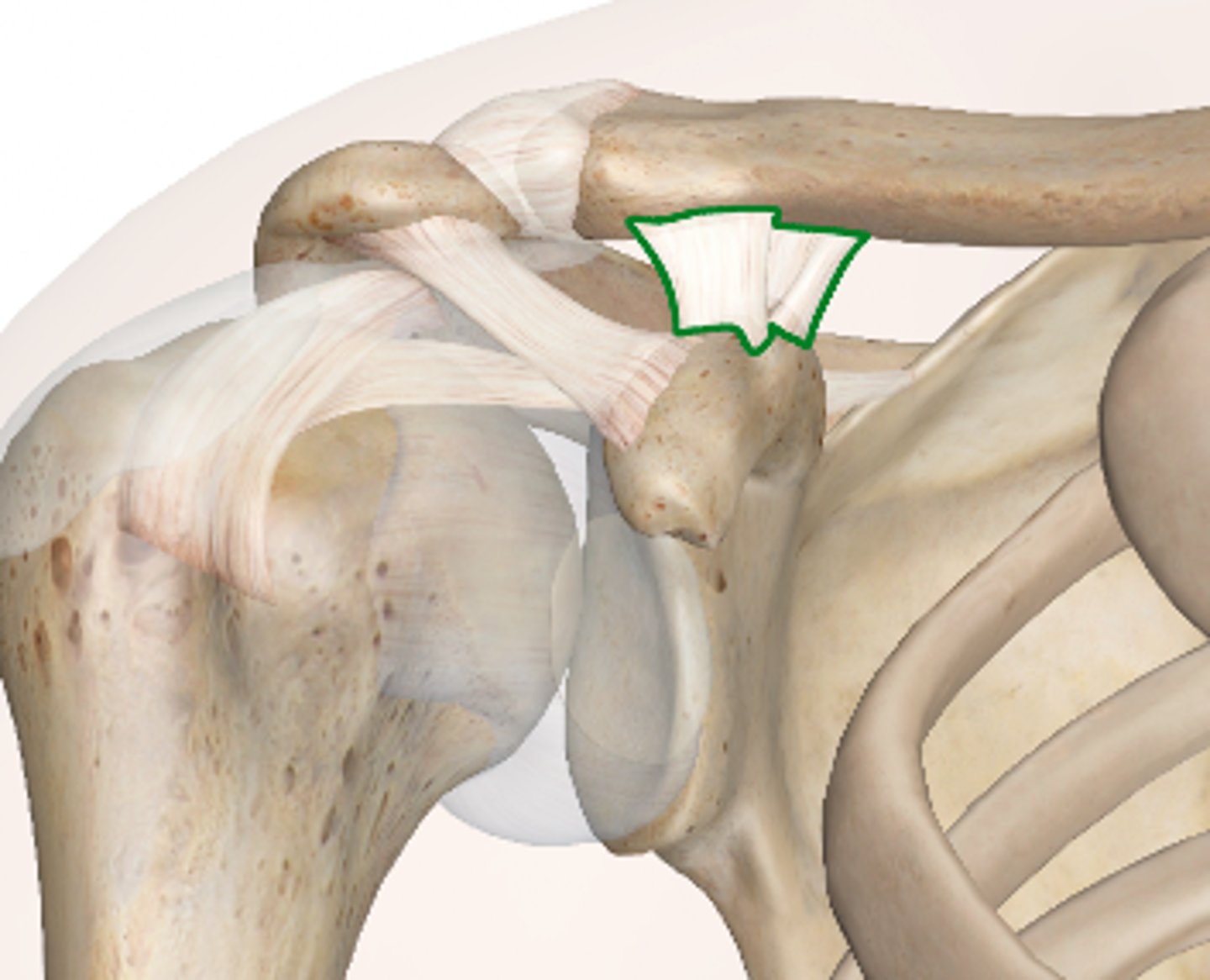
acromioclavicular (AC) joint
A simple joint where the bony projections of the scapula and the clavicle meet at the top of the shoulder.
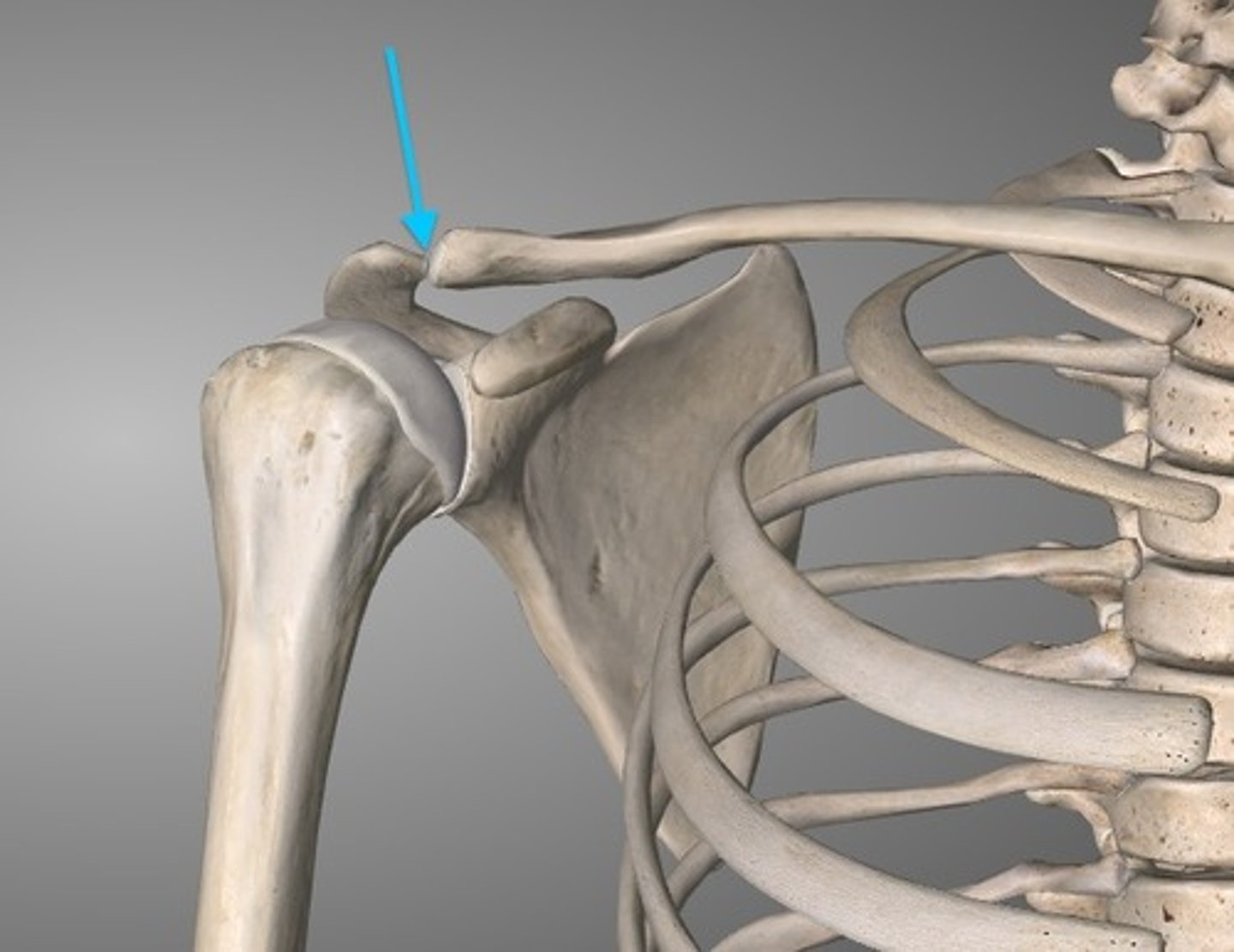
sternoclavicular (SC) joints
Movement in the SC joint is slight in all directions and of a gliding, rotational type
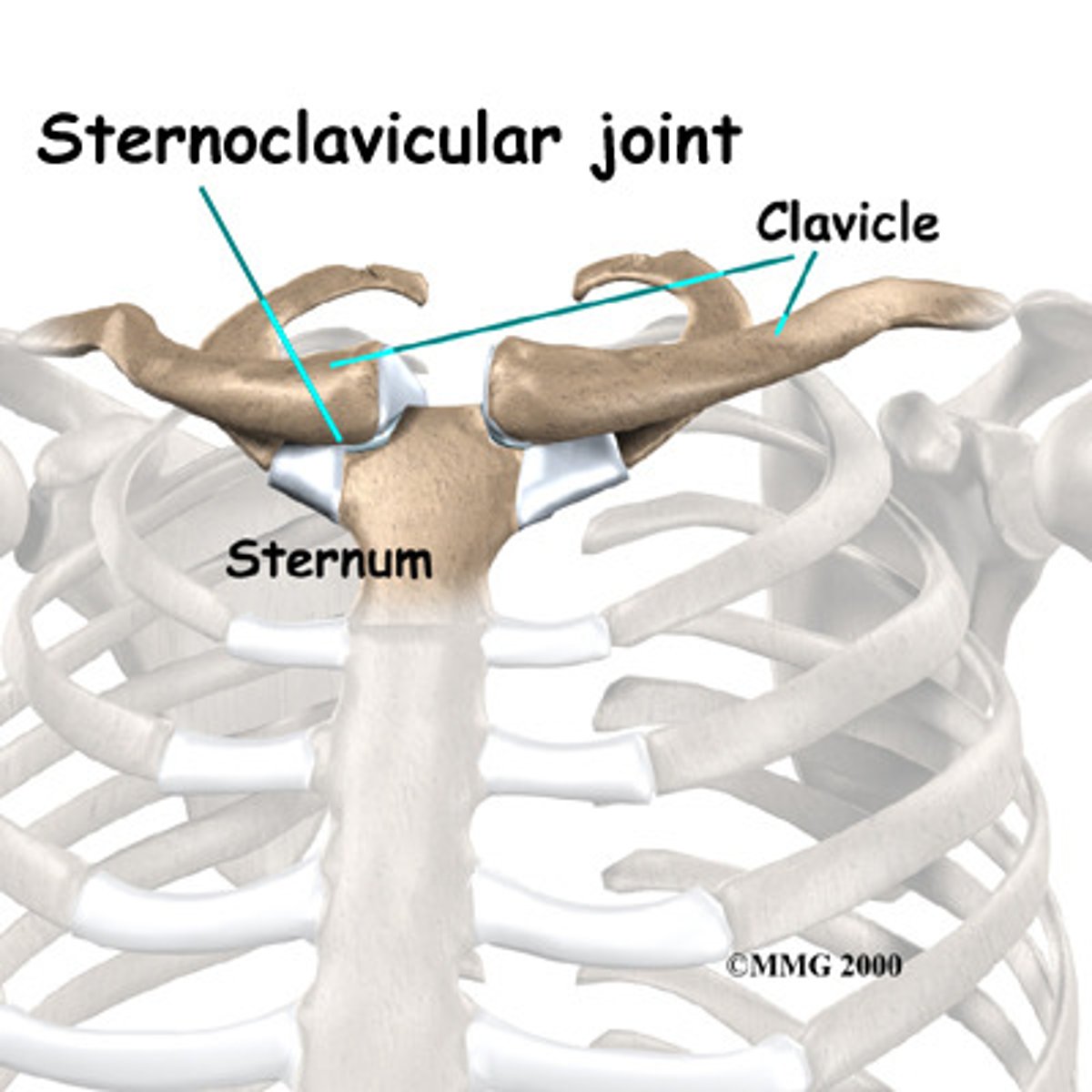
ligaments of shoulder joint
The shoulder joint is the articulation between the head of the humerus and the glenoid fossa of the scapula.
The ligaments of the shoulder joint include the capsular ligament, the glenohumeral ligament (superior, inferior, and middle sections), and the coracohumeral ligament.
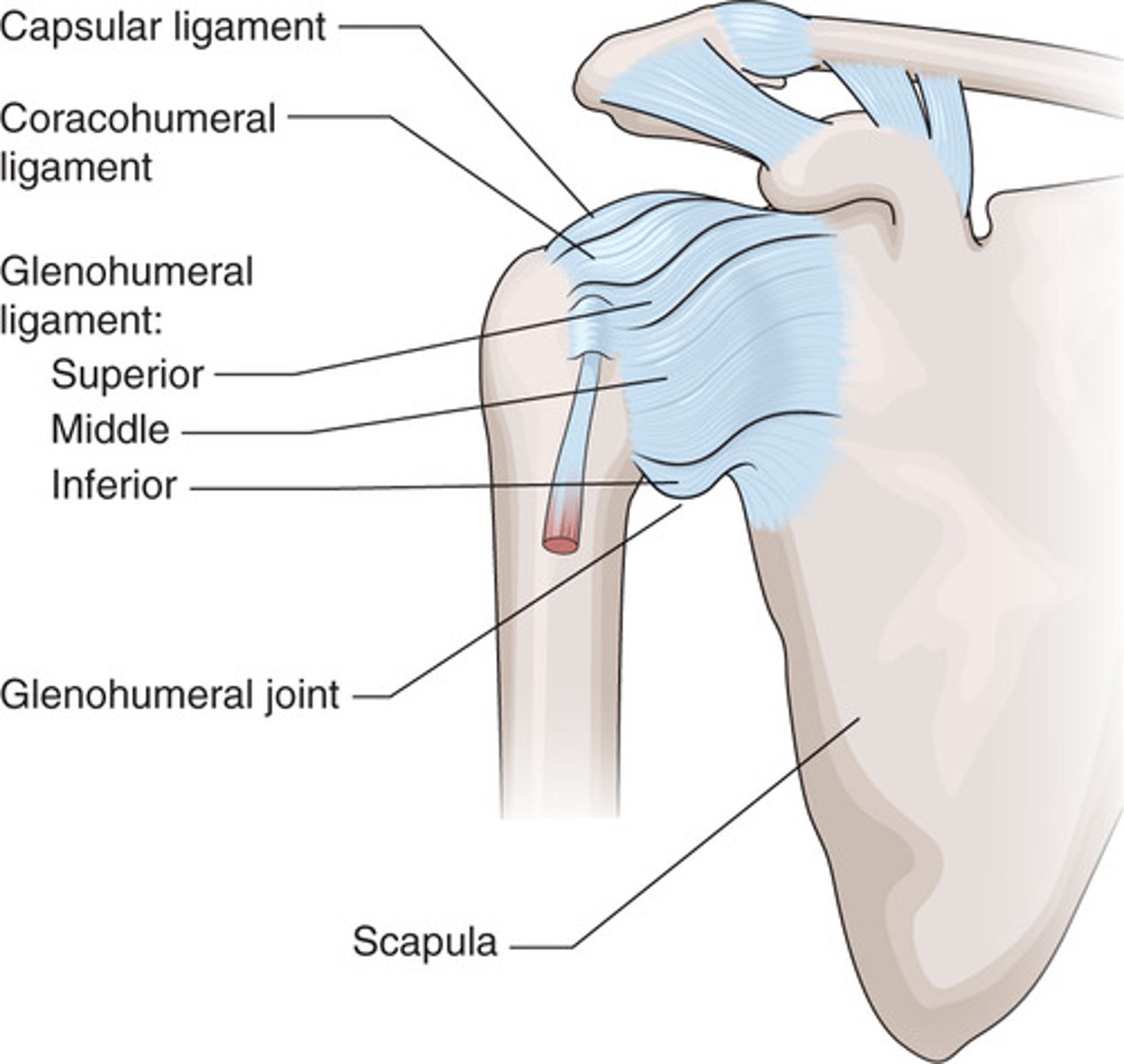
sternoclavicular ligament,
connects sternum to clavicle; responsible for the SC articulation
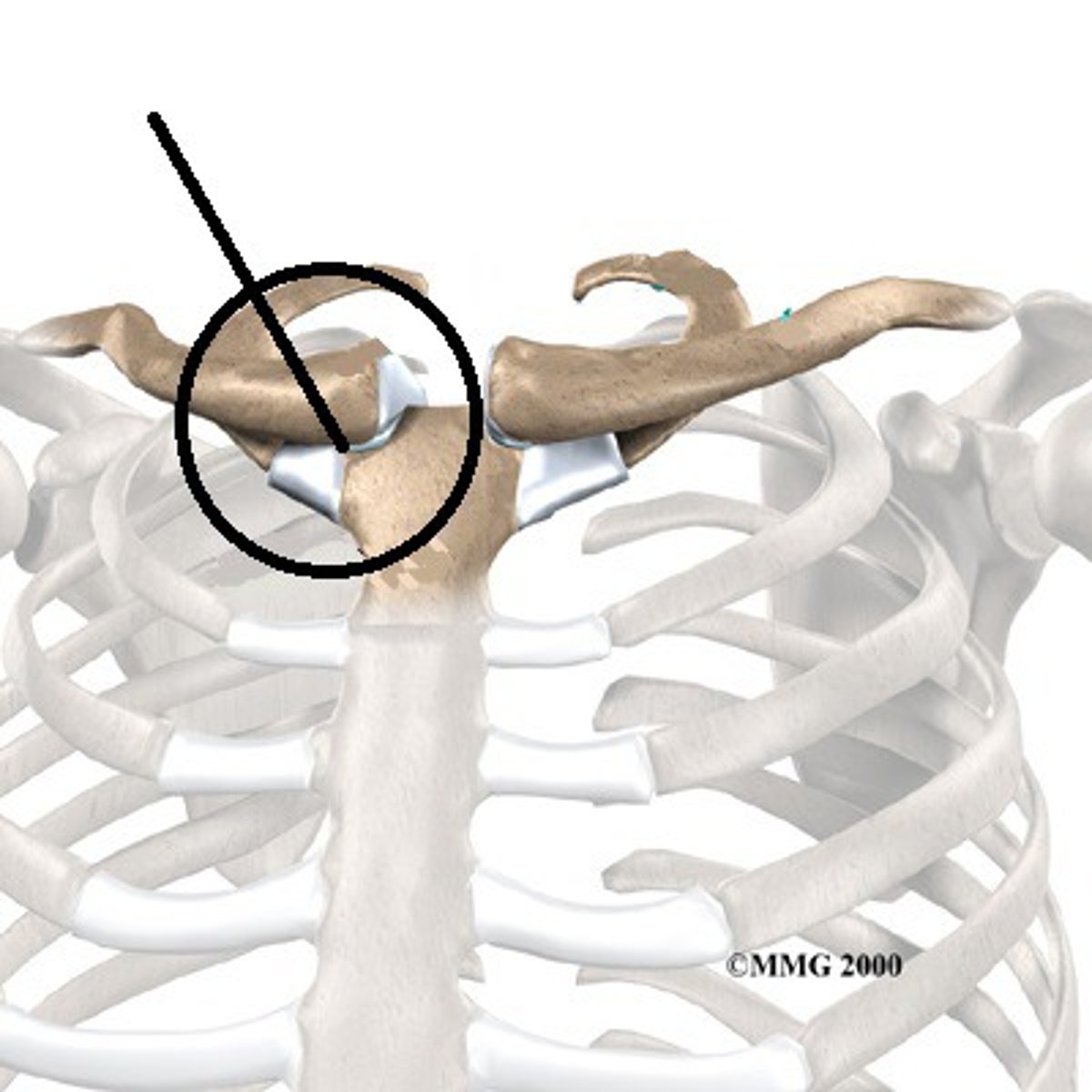
costoclavicular ligament
secures the sternal end of the clavicle to the first rib
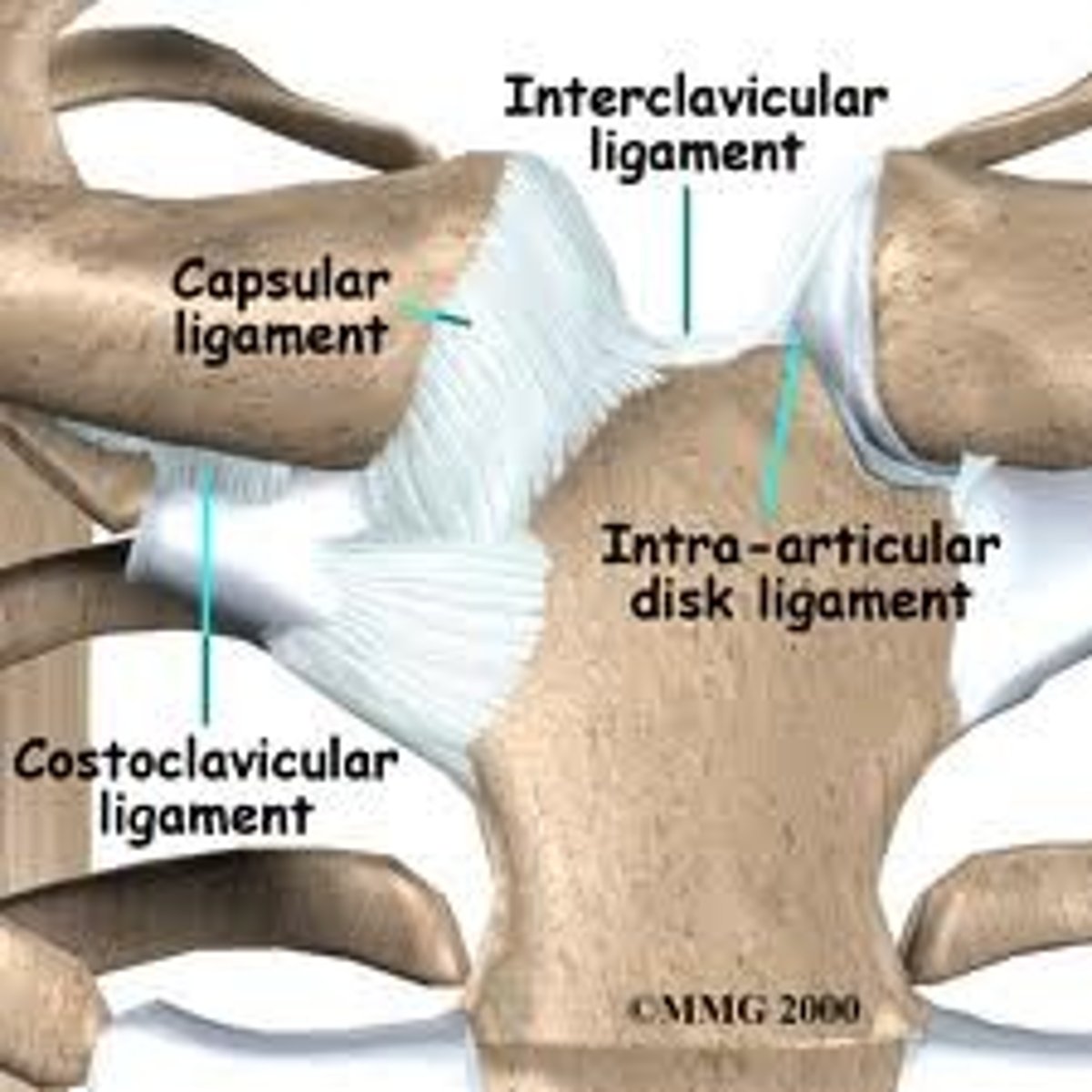
interclavicular ligament
secures the sternal ends of both clavicles into the clavicular notch of the manubrium of the sternum
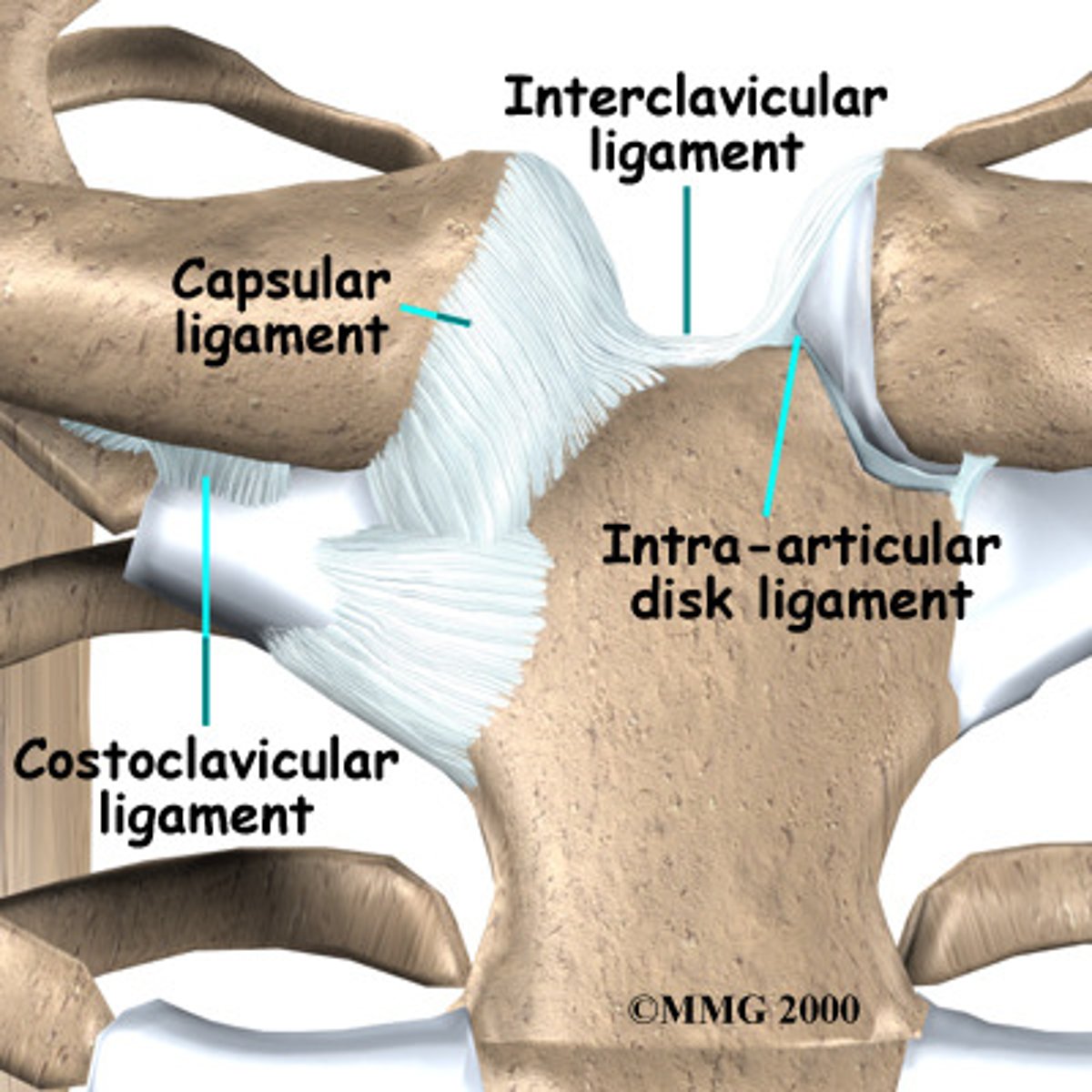
conoid ligament
the medial component of the coracoclavicular ligament and runs from the superior aspect of the coracoid process of the scapula to the posterior inferior aspect of the clavicle. It opposes backward, upward, and medial movement of the lateral aspect of the clavicle.
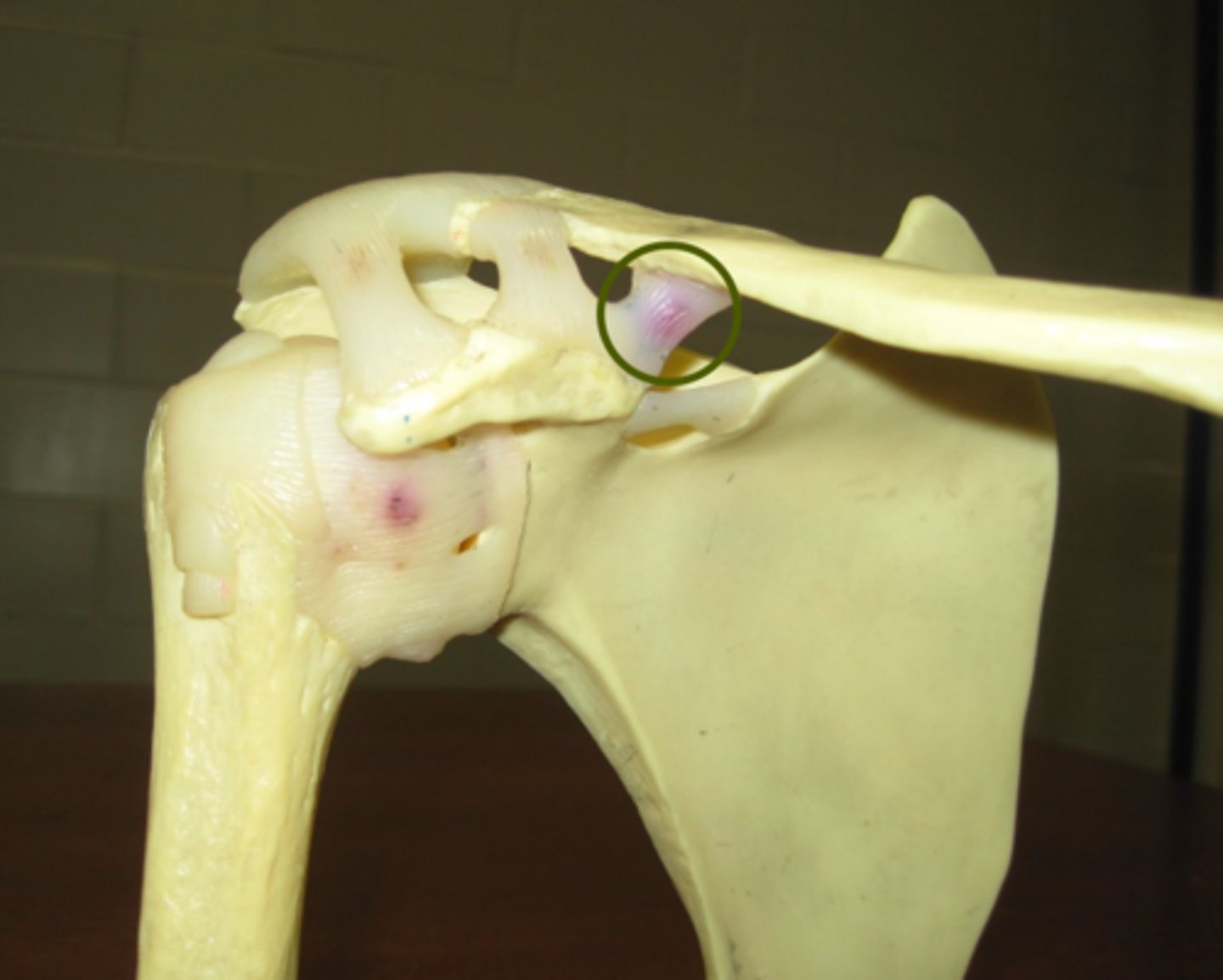
trapezoid ligament
runs from the superior aspect of the coracoid process of the scapula to the anterior inferior aspect of the clavicle. It opposes forward, upward, and lateral movement of the lateral aspect of the clavicle.
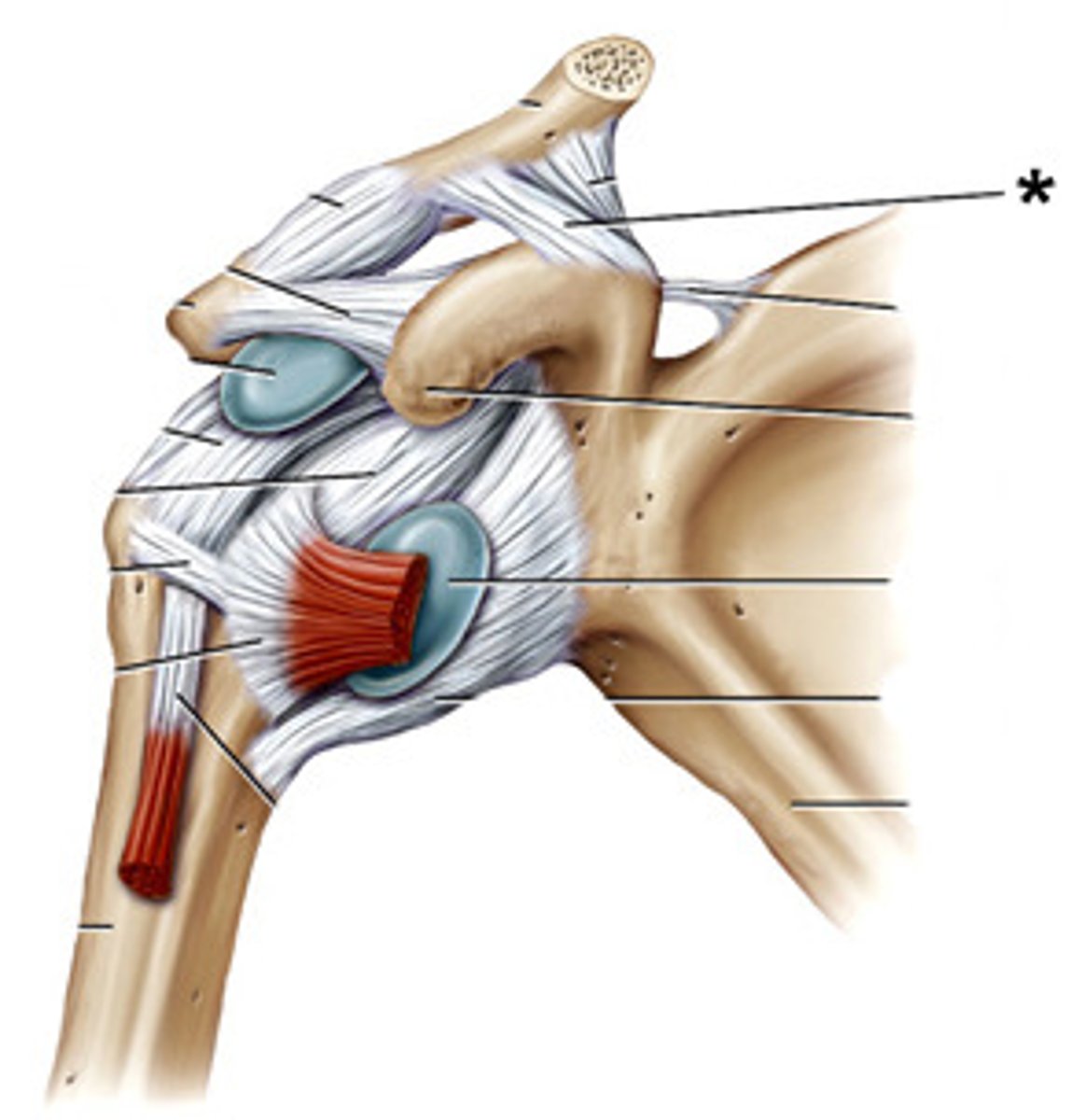
capsular ligament
attaches the anatomical neck of the humerus and the circumference of the glenoid of the scapula
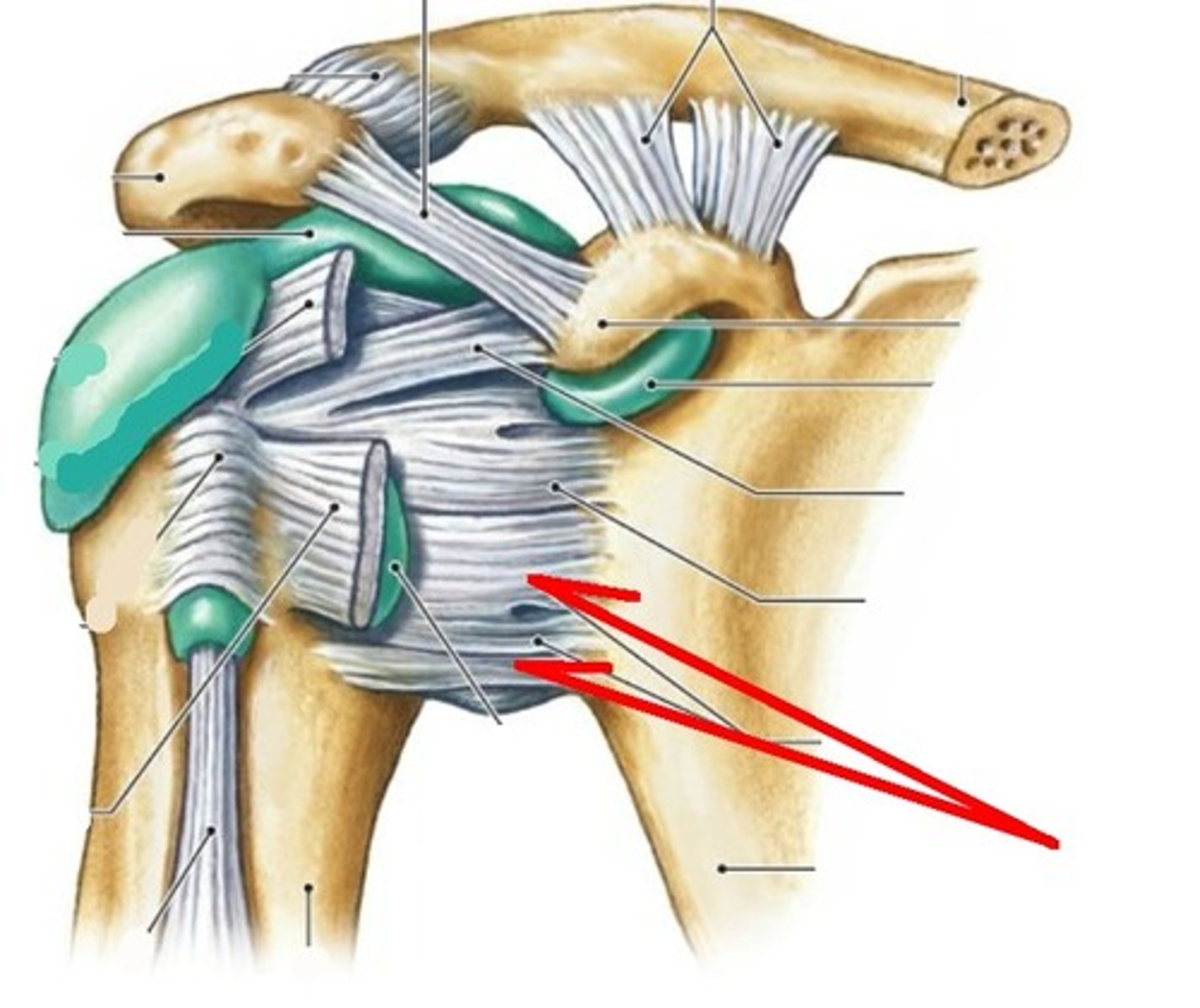
glenohumeral ligaments
beneath the anterior surface of the joint capsule and reinforce the capsule
superior glenohumeral ligament
runs between the upper surface of the lesser tuberosity of the humerus and the superior edge of the glenoid of the scapula.
The middle glenohumeral ligament
runs between the anterior surface of the lesser tuberosity of the humerus and the anterior edge of the glenoid of the scapula.
inferior glenohumeral ligament
runs between the lower anterior surface of the lesser tuberosity of the humerus and the lower anterior edge of the glenoid of the scapula
coracohumeral ligament
runs between the anatomical neck of the humerus, near the greater tuberosity, and the lateral aspect of the coracoid process of the scapula
other ligaments of the shoulder
In addition to ligaments of the shoulder joint and girdle, other ligaments of the shoulder include those specific to the scapula and the humerus.
superior transverse scapular ligament
crosses the scapular notch, converting the notch into a foramen through which the suprascapular nerve passes.
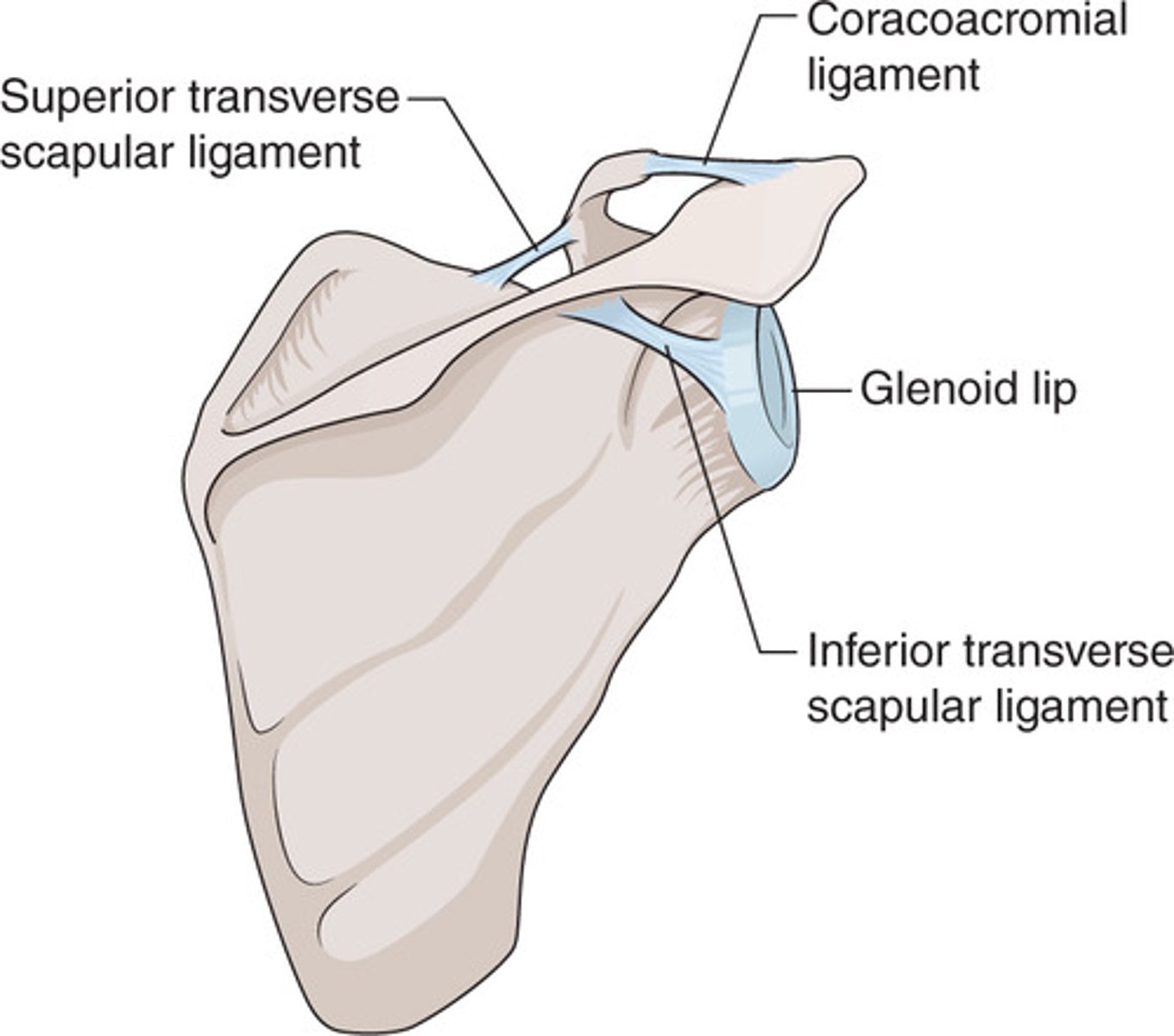
The inferior transverse scapular ligament
crosses from one edge to the other of the great scapular notch.
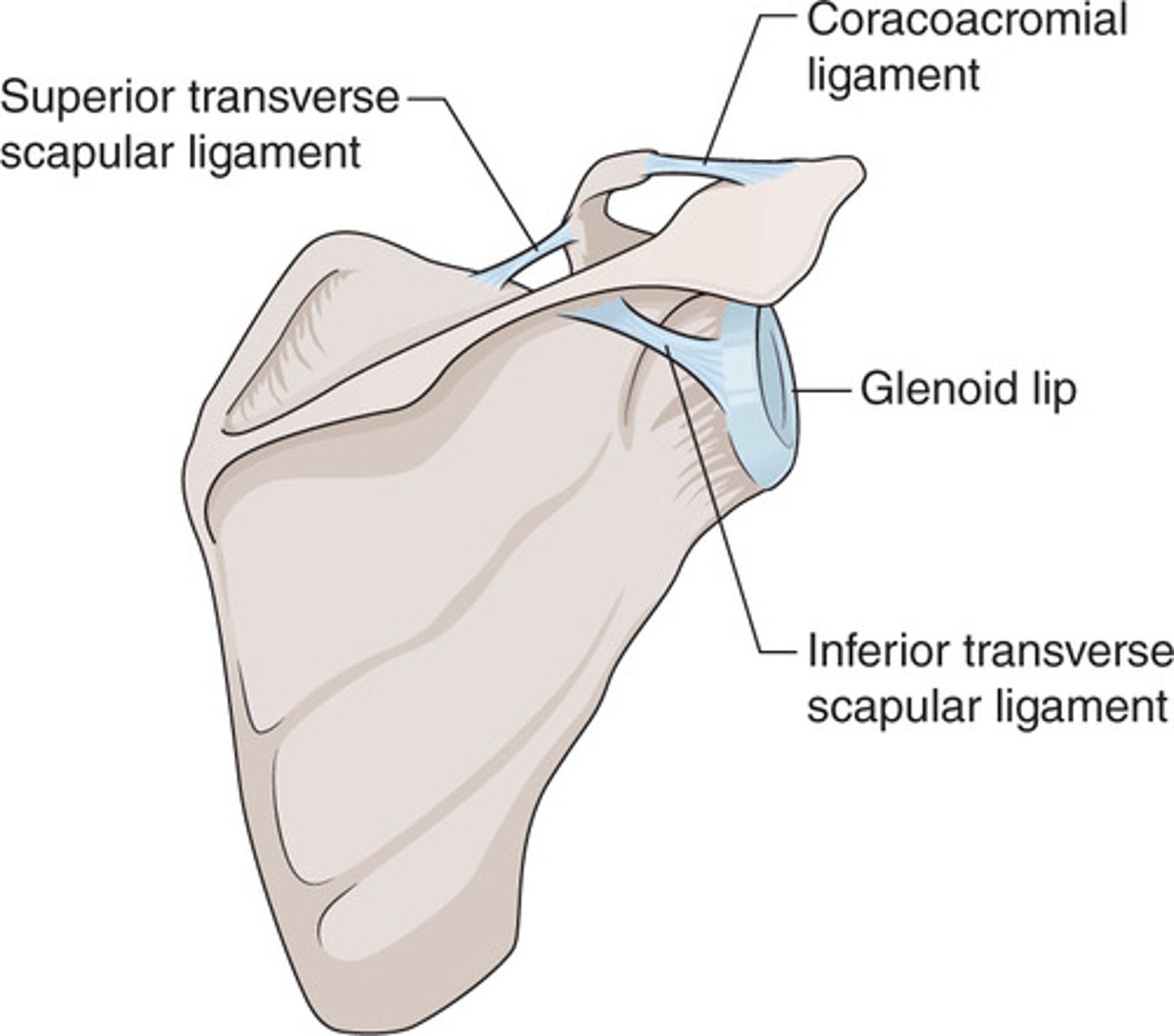
coracoacromial ligament
crosses between the coracoid process and the acromion process of the scapula
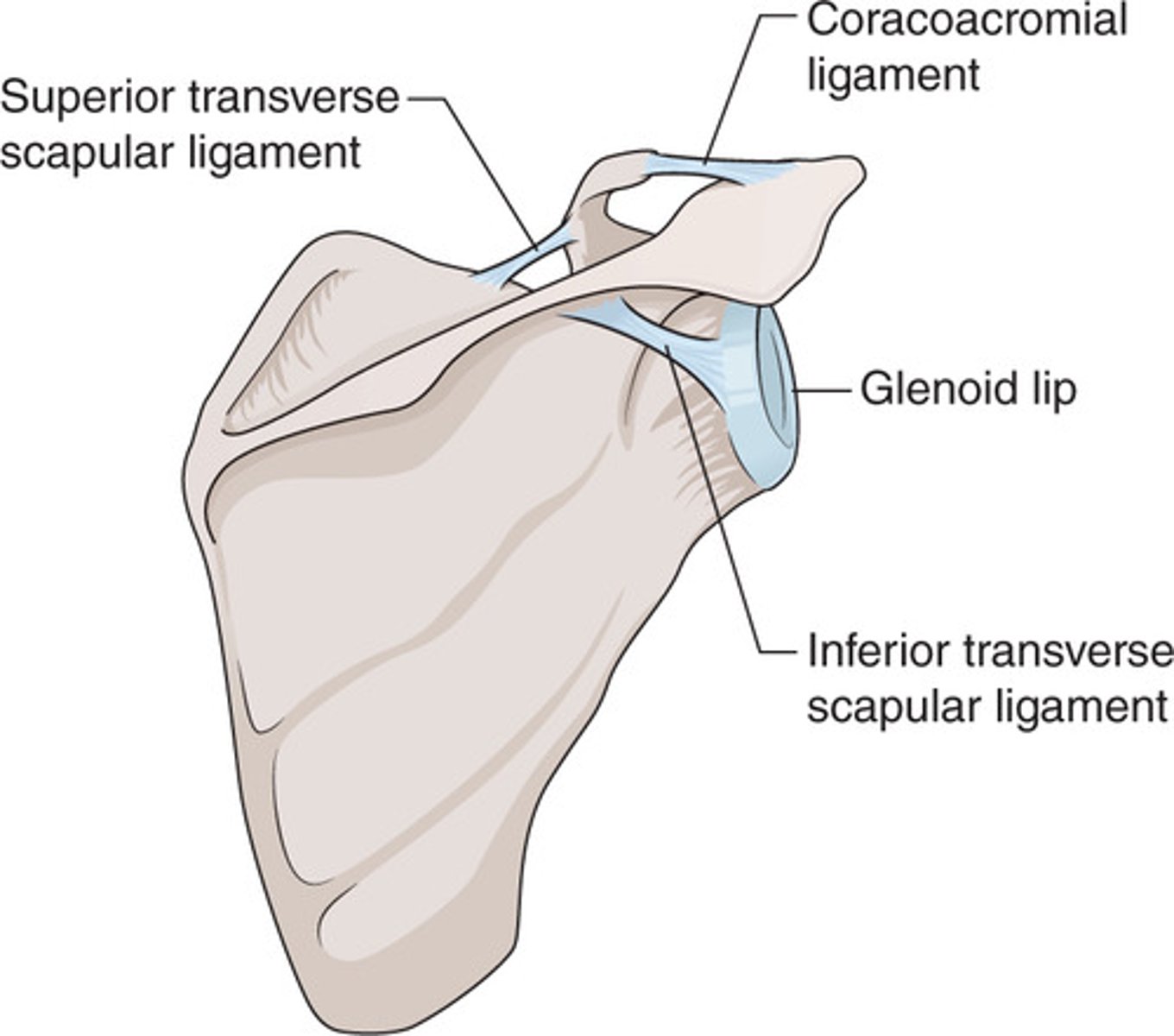
glenoid lip (glenoid labrum)
a ligament that forms an edge around the entire circumference of the glenoid of the scapula; helps deepen the glenoid fossa for the head of the humerus to add to the stability of the shoulder joint
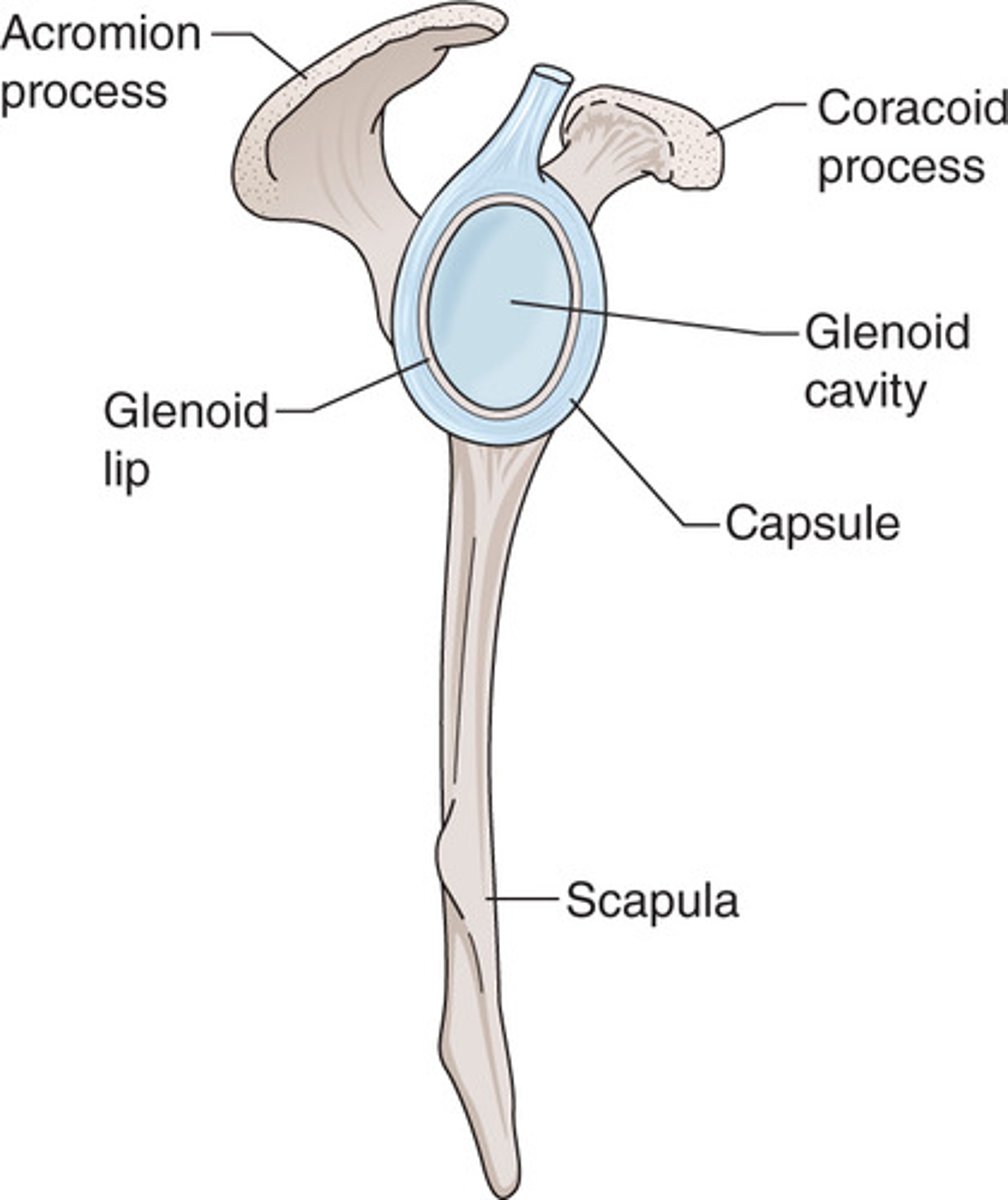
ligaments of the humerus
the greater and lesser tuberosities
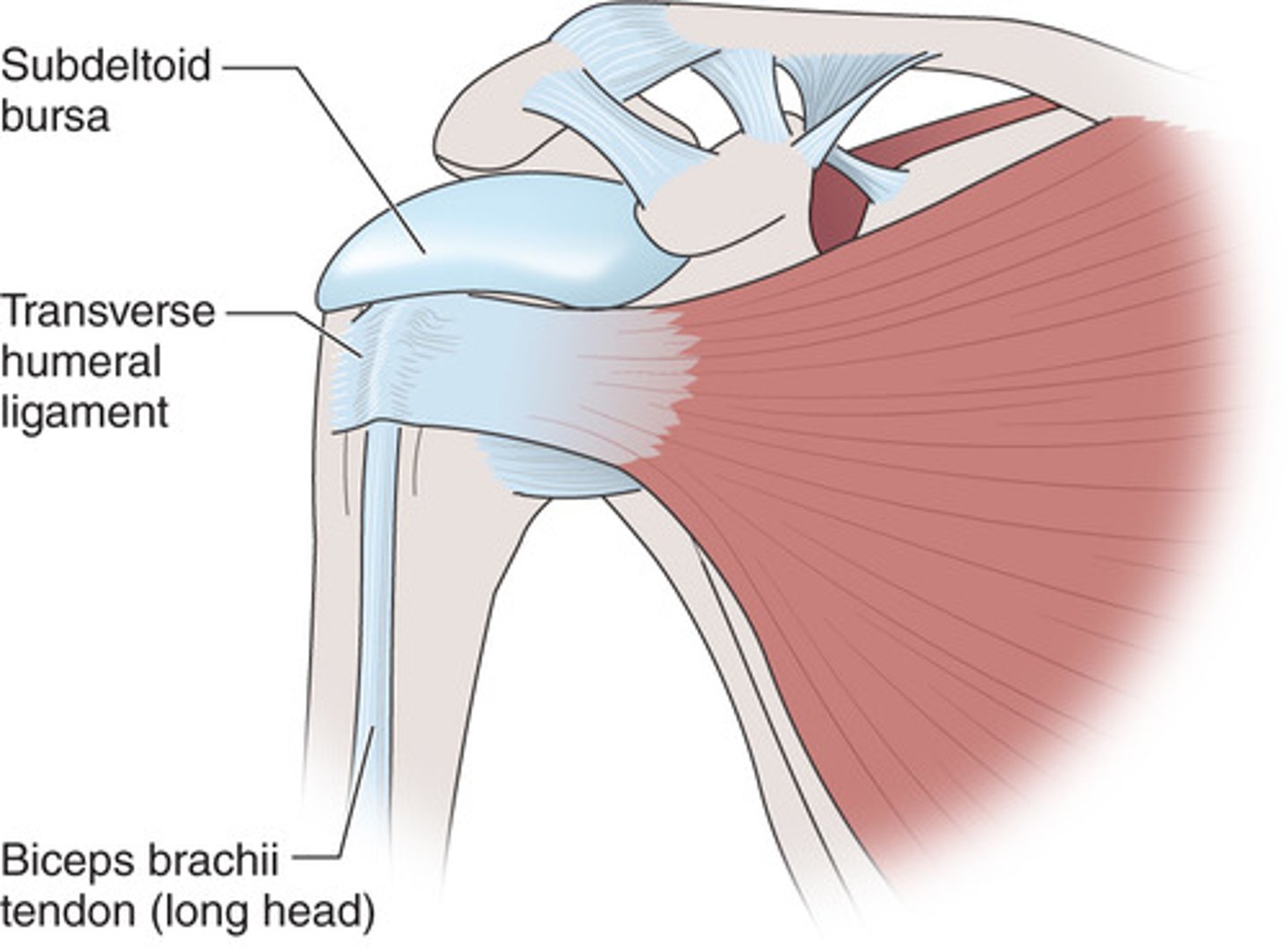
transverse humeral ligament
hold the tendon of origin of the long head of the biceps brachii muscle in the groove.
